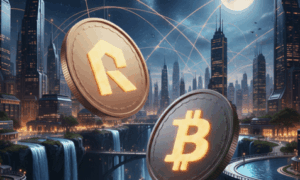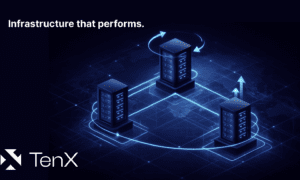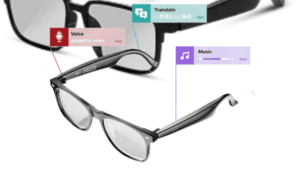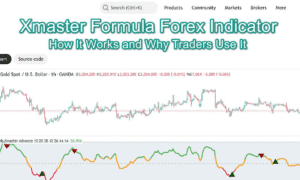Blockchain technology has advanced into one of the most transformative innovations of the 21st century. Initially introduced as the underlying framework for cryptocurrencies, blockchain has now permeated various sectors, revolutionizing how data, assets, and transactions are managed. Among its groundbreaking applications, tokenized asset platforms are emerging as a pivotal innovation, poised to redefine ownership and investment in the digital era. These platforms harness the power of blockchain to convert physical and intangible assets into digital tokens, facilitating a new level of accessibility and liquidity. As industries grapple with the potential of this technology, tokenized asset platforms stand out as a solution for democratizing access to high-value assets, traditionally locked away from the majority.
Understanding Tokenized Assets
At its core, tokenization involves converting the value of a tangible or intangible asset into a digital token that resides on a blockchain. These tokens represent fractional ownership of the asset and can be traded, transferred, or held like traditional financial instruments. Assets that can be tokenized include:
Real Estate:
Properties such as residential homes, commercial buildings, or land parcels.
Commodities:
Precious metals like gold and silver, as well as natural resources.
Equities and Bonds:
Stocks, government securities, and corporate bonds.
Art and Collectibles:
Paintings, sculptures, rare coins, and other valuable items.
Intellectual Property:
Royalties from music, films, patents, or copyrights.
By tokenizing these assets, platforms make them more accessible to a broader audience, allowing even small-scale investors to participate in markets that were once exclusive to high-net-worth individuals and institutions.
How Tokenized Asset Platforms Work
The process of tokenization typically involves several key steps:
Asset Identification and Valuation:
The platform identifies an asset suitable for tokenization and determines its market value through appraisal or other valuation methods.
Legal Structuring:
The ownership and rights associated with the asset are clearly defined, ensuring compliance with relevant laws and regulations. This may involve creating a legal entity to hold the asset.
Token Creation:
The asset’s value is divided into digital tokens, with each token representing a fractional share of the asset. These tokens are created using blockchain technology, ensuring transparency and security.
Platform Integration and Distribution:
The tokens are listed on a tokenized asset platform, where investors can purchase, trade, or hold them. Transactions are recorded on the blockchain, providing a tamper-proof ledger of ownership.
Secondary Market Trading:
Investors can trade these tokens on secondary markets, enhancing liquidity and accessibility.
Advantages of Tokenized Asset Platforms
Enhanced Liquidity
One of the most significant benefits of tokenization is the increased liquidity it brings to traditionally illiquid markets. For example, real estate investments often require large capital commitments and long holding periods. Tokenized platforms allow investors to buy and sell fractional shares, making it easier to access and exit investments.
Broader Accessibility
Tokenized asset platforms lower the entry barriers to high-value markets. Fractional ownership means that even small investors can diversify their portfolios by investing in assets like luxury properties or fine art, which were previously out of reach.
Transparency and Security
Blockchain’s decentralized and immutable nature ensures that all transactions are transparent and secure. Smart contracts automate processes such as dividend payments, reducing the risk of fraud and enhancing trust.
Cost Efficiency
Traditional asset transactions often involve intermediaries, such as brokers and custodians, leading to high fees and lengthy settlement times. Tokenized platforms streamline these processes, reducing costs and enabling near-instantaneous transactions.
Global Reach
Blockchain technology enables cross-border transactions with minimal friction. Tokenized assets can be traded globally, opening up new markets and opportunities for both investors and asset owners.
Fractional Ownership
Tokenization breaks assets into smaller units, allowing investors to own a fraction of a high-value asset. This democratization enables greater diversification and inclusivity.
Challenges Facing Tokenized Asset Platforms
Despite their immense potential, tokenized asset platforms face several challenges:
Regulatory Uncertainty
The regulatory landscape for tokenized assets is still evolving. Different jurisdictions have varying rules regarding the classification, taxation, and trading of tokenized assets. Navigating these complexities is crucial for widespread adoption.
Market Adoption
While blockchain technology has gained traction, many potential investors and institutions remain unfamiliar with tokenized assets. Education and awareness campaigns are essential to drive adoption.
Technical Risks
The security of blockchain networks and smart contracts is paramount. Vulnerabilities in the underlying technology could lead to hacking or loss of funds, undermining trust in tokenized platforms.
Asset Valuation and Legal Disputes
Establishing accurate valuations for tokenized assets and resolving ownership disputes can be challenging, especially for unique assets like art or intellectual property.
Interoperability
For tokenized asset platforms to thrive, seamless integration with existing financial systems and other blockchain networks is necessary. Lack of standardization can hinder this interoperability.
Real-World Use Cases of Tokenized Asset Platforms
Real Estate Investment
Tokenized platforms like RealT and Propy are transforming the real estate market. Investors can purchase fractional ownership of properties, earning rental income and benefiting from capital appreciation without the need for direct property management.
Art and Collectibles
Platforms such as Maecenas allow art enthusiasts to invest in high-value pieces by purchasing fractional shares. This model enables more people to participate in the lucrative art market.
Commodities Trading
Tokenized gold and other precious metals are gaining popularity as a hedge against inflation. Platforms like Digix and Paxos offer secure, blockchain-based ownership of these assets.
Equity and Debt Markets
Startups and small businesses can raise funds through tokenized equity or debt offerings. These platforms streamline the fundraising process, reducing reliance on traditional venture capital and banking systems.
The Future of Tokenized Asset Platforms
The potential of tokenized asset platforms to reshape global markets cannot be overstated. As blockchain technology matures and regulatory clarity improves, we can expect a surge in the adoption of these platforms across industries. Key trends to watch include:
Integration with Decentralized Finance (DeFi):
Tokenized assets could become key components of DeFi ecosystems, enabling innovative financial products such as lending, staking, and yield farming.
Institutional Participation:
Major financial institutions are beginning to explore tokenization, bringing credibility and resources to the market.
AI-Driven Insights:
The integration of artificial intelligence with tokenized platforms could provide investors with data-driven insights, enhancing decision-making.
Expansion into Emerging Markets:
Tokenization can drive economic inclusion in developing regions by enabling micro-investments in local assets.
Conclusion
Tokenized asset platforms represent a paradigm shift in how we perceive and interact with real-world assets. By leveraging blockchain technology, these platforms make high-value assets more accessible, liquid, and secure. While challenges remain, the opportunities they present far outweigh the hurdles. As adoption grows, tokenized assets have the potential to democratize wealth creation, foster global economic participation, and revolutionize traditional financial systems. For investors, institutions, and innovators alike, the era of tokenization offers unprecedented possibilities for growth and collaboration.



































